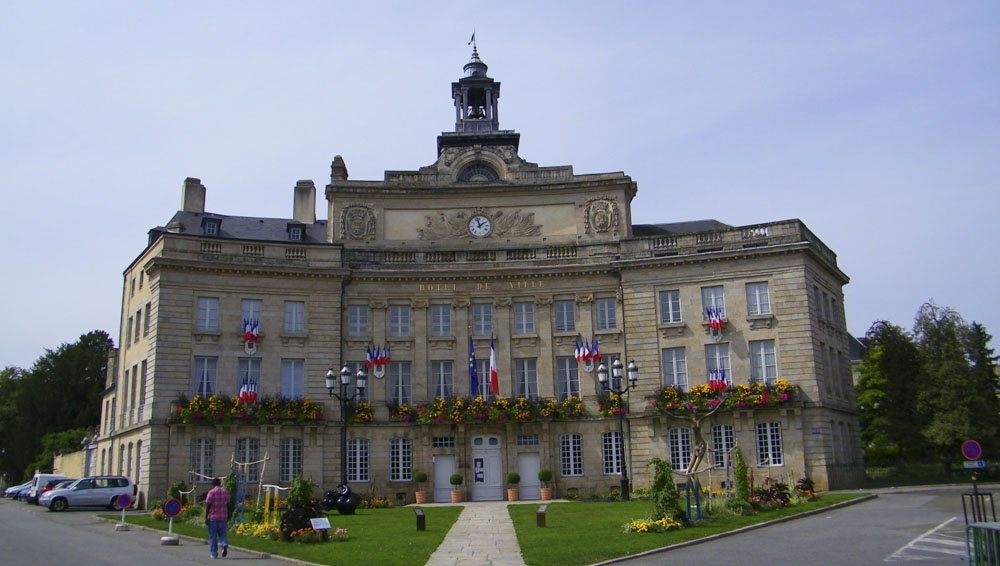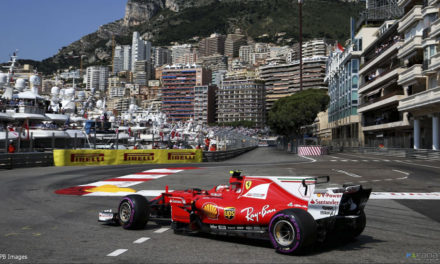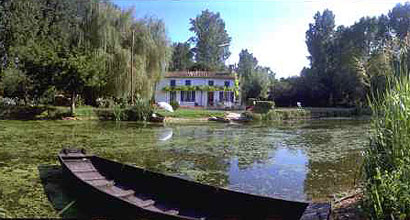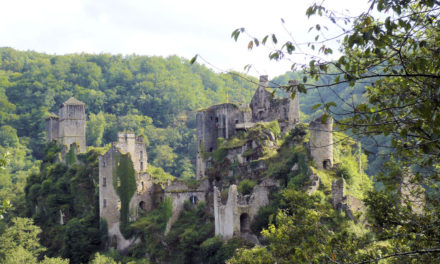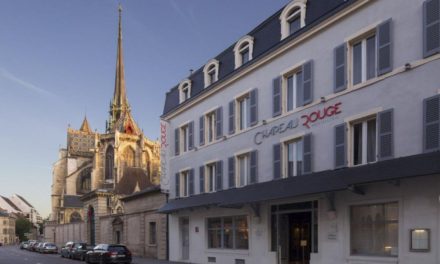Alençon is the capital of the Orne department in the region of Lower Normandy, northern France. Located in the most southerly part of Normandy, this inland area away from the Atlantic coast has a different climate from the rest of Normandy, warmer and drier for most of the year and colder in winter. Its name is derived from the Latin for “bend in the river” as the city was built near a ford which crosses the Sarthe river (downstream from Pont Neuf). Because of its strategic position near major road routes from Paris and from the Channel ports, Alençon has long been a city of economic importance with a colourful military history in the Middle Ages. A bustling market town surrounded by beautiful countryside and picturesque villages, this region of south east Normandy is unspoiled by over-commercialisation and a delightful place to explore.
Book a Hotel in Alençon
History
The city dates back to the 4th century when Christianity was being introduced to the local inhabitants. In 1047, William Duke of Normandy, later known as William the Conqueror and King of England, laid siege to the town. Alençon was ruled by the English during the Anglo-Norman wars of 1113 to 1203.
The city became the seat of a dukedom in 1415, the title of the Duke of Alençon, being given to the younger brothers of the King of France until the French Revolution. Formerly known as the “City of Dukes”, the French Revolution caused little disturbance here and the city is home to several preserved historic buildings from this period.
Alençon is renowned for its needle point lace industry called ‘Point d’Alencon’ which was started in the 17th century. Made from linen thread, it is amongst the finest lace in the world. The economic development of the 19th century led to an industrial boom generated by several mills and good transport links being built. In the first half of the 20th century, the city developed a thriving printing industry. After the war the population increased sharply and new industries prospered, many of which are related to plastics. The town now has a major plastics educational centre with an engineering school dedicated to the industry.
Attractions
This part of Normandy and the upper Pays de Loire region has much to offer the visitor with opportunities to visit chateaux, castles, gardens and endless forestry and countryside. Cycling, horse riding and hiking are popular ways to discover the area and, for the intrepid, kayaking along the river is a great experience.
The old town is a maze of narrow medieval cobbled streets with a good selection of cafés, shops, restaurants, parks and street markets (Thursday and Saturday). The Parc des Promenades near the château has open-air shows, festivals and fairs and a pretty rose garden near the bandstand.
The Musée de la Dentelle in the centre of Alençon has a permanent exhibition of lace and the National Lace Workshops are situated in the building next door which sell samples of lace in the museum shop. The lace is not cheap to buy but this is explained by the UNESCO committee which declared “Alençon needle lace is unusual because of the high level of craftsmanship required and the very long time that it takes to produce (seven hours per square centimetre)”. There are also fine lace collections at the Museum of Fine Arts and Lace which includes paintings from the 17th century and 18th century French school.
The château of the Dukes d’Alençon is no longer complete having survived decades of attacks. It was largely dismantled over the centuries but there are substantial remains including three enormous towers and part of the walls which are now preserved as a national monument. A section of the fortress is now the town prison. During World War II, the château served as the Gestapo headquarters.
Saint Thérèse de Lisieux was born in Alençon in 1873. She was a Roman Catholic nun who was canonised as a Saint by Pope Pius XI in 1925 and she is often referred to as the greatest saint of modern times. She is also referred to as ‘The Little Flower of Jesus’ and sadly she died at the tender age of 24. The house and garden where Thérèse spent her childhood is open to the public and there is also a charming chapel to see where she worshipped. She was baptised in the Gothic church of Notre Dame and in 2008 it became the Basilique de Notre Dame when Thérèse’s parents were both beatified. This XVth century church has a magnificent 3-panelled great door and very fine stained glass windows (made in 1530). The choir and bell tower were rebuilt in the mid 18th century and the porch with three arcades has three delicately worked gables.
Maison d’Ozé built in the 15th century, is now occupied by the Tourist Office. The Halle au Blé (19th century Corn Exchange) is an interesting circular building which was the original wheat market but is now home to exhibitions beneath its magnificent glass dome. The Municipal Library (rue du Collége) is the former chapel of the Jesuit College which has interesting XVIIIth century panelling from Val Dieu Abbey.
The German army took occupation of Alençon on 17 June 1940 and the old castle keep near the Halle au Blé became the Gestapo’s headquarters. The story of the Occupation is explained in a small exhibition hall next to the Tourist Office near the Eglise de Notre Dame. A Sherman tank is on display in the forest of Ecouves and an important memorial and military museum is to be found at Coudehard, high on the hillside overlooking the valley where the final action in the Battle of Normandy took place.
Accommodation & Restaurants
Château de Sarceaux is an 18th century castle with 4 individually styled rooms and a suite with views overlooking the gardens. It has a restaurant and guests can choose whether to dine in the drawing room, the restaurant itself or on the terrace. WiFi facilities are available free throughout the hotel.
Château de Saint Paterne is also a beautiful castle. 2.5 miles from Alencon it is a 3* boutique hotel with comfortable rooms set in the heart of a 25 acre park which was once the secret retreat for Henry IV. There is an outdoor swimming pool as well as many leisure and sportive activities in the nearby area. The restaurant serves traditional French cuisine by candlelight which gives it a romantic atmosphere.
Rive Droite is an elegant restaurant with a creative menu. A culinary treat, the chef cooks seasonal dishes and the menu changes every month. The building was originally General Leclerc’s HQ at the time of the Liberation and later a lace museum.
Chez Fano is a typical French brasserie in the centre of town located in Rue St. Blaise, near the Basilique de Notre Dame. It has a good reputation for traditional bistro food and is a popular place to meet, so it is advisable to book in advance. Au Petit Vatel in Place du Commandant Desmeulles has an excellent menu and is well known for its gastronomy and conviviality. Located near the Museum of Arts and Lace, this stone-built house with cascades of colourful flowers on the balcony, is a charming place to relax and enjoy fine food.
Transport
Alençon is linked by the A28 autoroute with the nearby cities of Le Mans to the south and Rouen to the north. The recently completed A88 autoroute links the A28 to the coastal port of Caen. It is approximately 106 miles from Paris which is accessed from the A11 autoroute from Paris to Le Mans.
Getting to Alençon by ferry from the UK is easy, the nearest ferry port is Caen although Cherbourg, Le Havre or St. Malo are within reasonable driving distance.
By train: From the TGV station at Le Mans, Paris is 55 minutes. Alençon also has its own railway station with frequent trains from Caen and Le Mans and also from Paris Montparnasse.
By Air: There are no major airports nearby, Paris is the nearest.
Tourist Office
Office de Tourism
Maison d’Ozé
Place de la Magdelieine
61000 – Alençon
Tel: 02.33.80.66.33

